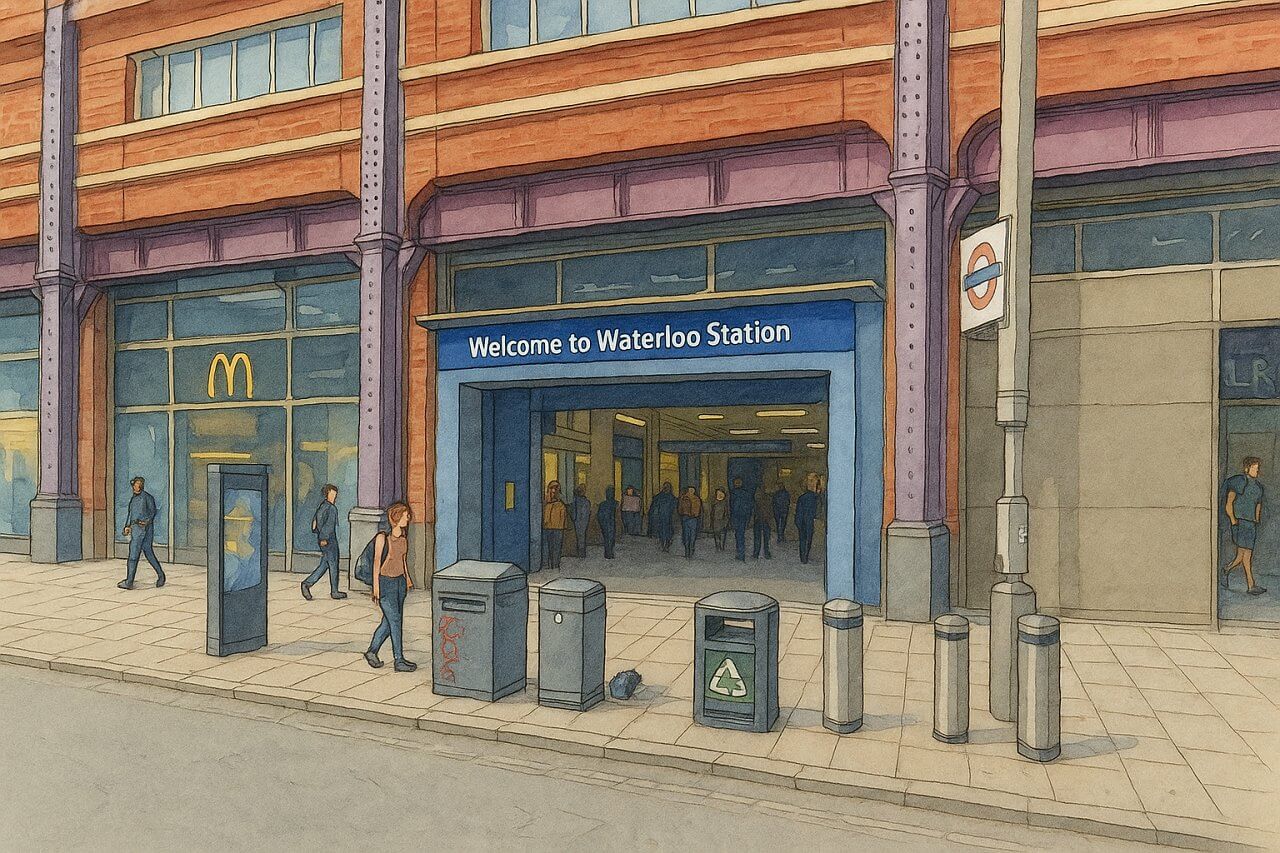
Waterloo Station, London
It is the largest train station in the United Kingdom by floor space and passenger throughput, making it a vital artery for commuters, visitors, and long-distance travellers alike.
Where to Find the Entrances and Exits
Waterloo Station has multiple entrances and exits connecting to surrounding roads, including:- Main Entrance: On Waterloo Road (A301), directly opposite The Old Vic theatre
- Other key access points from York Road, Cab Road, and Spur Road
- Direct pedestrian link from the South Bank and the footbridge over Hungerford Bridge
Proximity to Charing Cross
Waterloo Station is located approximately 0.7 miles (1.1 km) from Charing Cross, often considered the geographical heart of London. By road, the journey typically takes around 5 to 10 minutes via Waterloo Bridge or Westminster Bridge, depending on traffic conditions.Rail Services at Waterloo Station
Waterloo Station is a key terminal for the following services:- National Rail: Operated by South Western Railway, serving destinations across Surrey, Hampshire, Berkshire, Dorset, and beyond.
- London Underground: Four Underground lines connect here.
- Bus Services: Numerous local and long-distance buses connect at street level outside the station.
London Underground Lines at Waterloo
Waterloo Station connects to four Underground lines across different directions:- Bakerloo Line: Between Lambeth North (preceding) and Embankment (following)
- Jubilee Line: Between Southwark (preceding) and Westminster (following)
- Northern Line: Between Kennington (preceding, via the Charing Cross branch) and Embankment (following)
- Waterloo & City Line: Directly connects to Bank (single-stop shuttle line)
Travelcard Zone
Waterloo Station is located in Travelcard Zone 1, placing it at the heart of London’s fare and transit system.History of Waterloo Station
The station was originally opened in 1848 by the London and South Western Railway (LSWR). However, the building we recognise today evolved over several decades.Initially a small terminal known as Waterloo Bridge Station, it underwent a major expansion in the early 20th century. The current form of the station, including the grand Victory Arch entrance, was completed in 1922.
Why Is It Called Waterloo?
The station takes its name from the nearby Waterloo Bridge, which itself commemorates the British victory over Napoleon at the Battle of Waterloo in 1815.Originally called Waterloo Bridge Station, the shortened name Waterloo Station was officially adopted later in the 19th century. Interestingly, the name has at times drawn criticism from the French, especially when Eurostar services (before their move to St Pancras) operated from there.
Quick Facts
| Name: | Waterloo Station |
| Opened: | 1848 (original); 1922 (current structure) |
| Location: | Waterloo Road, Lambeth SE1 |
| Lines Served: | National Rail, Bakerloo, Jubilee, Northern, Waterloo & City |
| Travelcard Zone: | Zone 1 |
| Distance from Charing Cross: | Approx. 0.7 miles (1.1 km) by road |
| Main Entrance: | Waterloo Road (A301) |
| Nearby Attractions: | South Bank, London Eye, The Old Vic |
Fun and Unusual Facts
- It was once home to Eurostar: From 1994 until 2007, Waterloo International was the London terminal for Eurostar trains to Paris and Brussels.
- It has the most platforms: With 24 platforms, it has more than any other station in the UK.
- Film and culture location: Waterloo Station has featured in multiple films and TV series, including The Bourne Ultimatum, Sliding Doors, and The Imitation Game.
- A bridge to the South Bank: Its footbridge and tunnel networks connect directly to the cultural venues along the River Thames, making it a popular route for tourists and theatre-goers.
- Victory Arch: The station’s main entrance, the Victory Arch, serves as a war memorial dedicated to railway employees who died in World War I and II.
Conclusion
Waterloo Station is more than just a terminal—it’s a key part of London’s story. From its 19th-century roots to its role in international travel and daily commuting, Waterloo stands as a symbol of London’s dynamic evolution.Whether you're arriving from the suburbs, hopping on the Tube, or exploring the nearby sights of the South Bank, this iconic station is the gateway to countless London adventures.
Waterloo Station is  on the Map of London Underground
on the Map of London Underground

Painting of Waterloo Station, London (View image in full size)